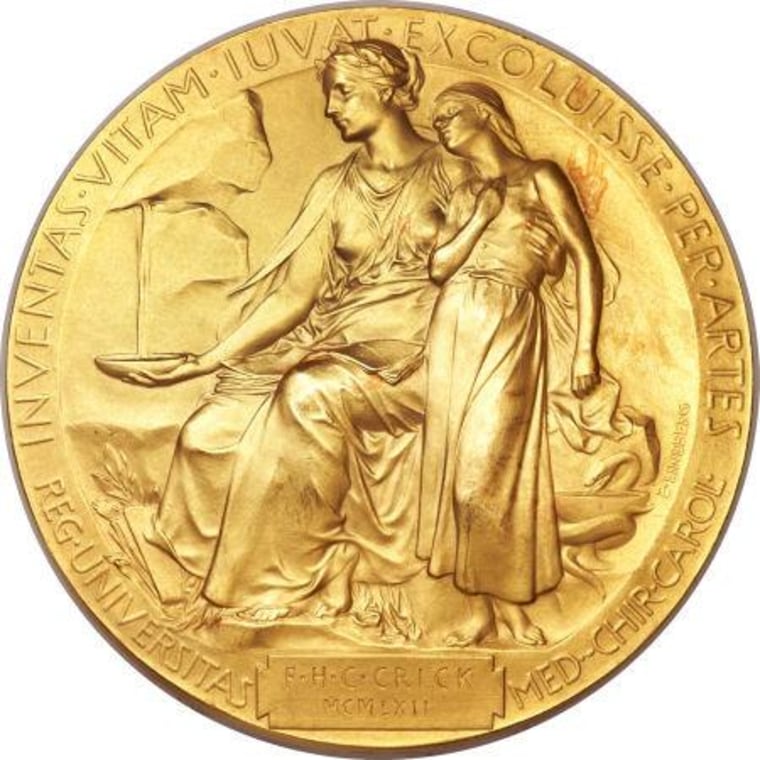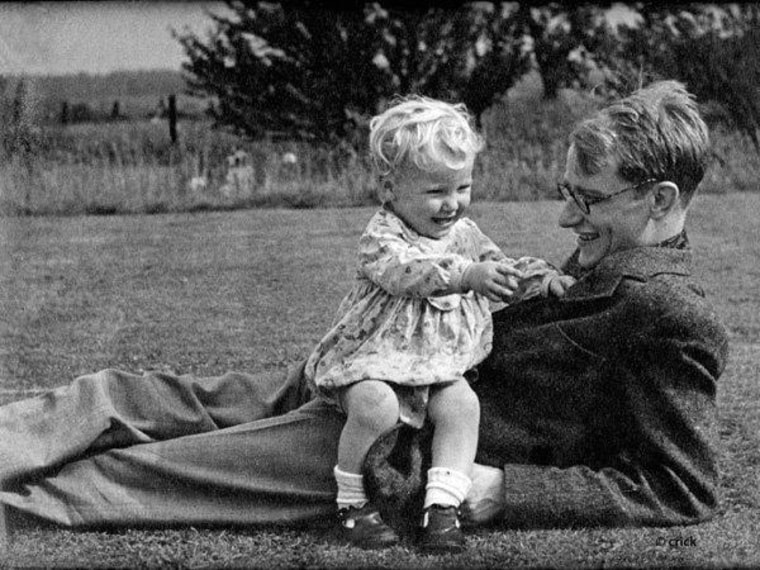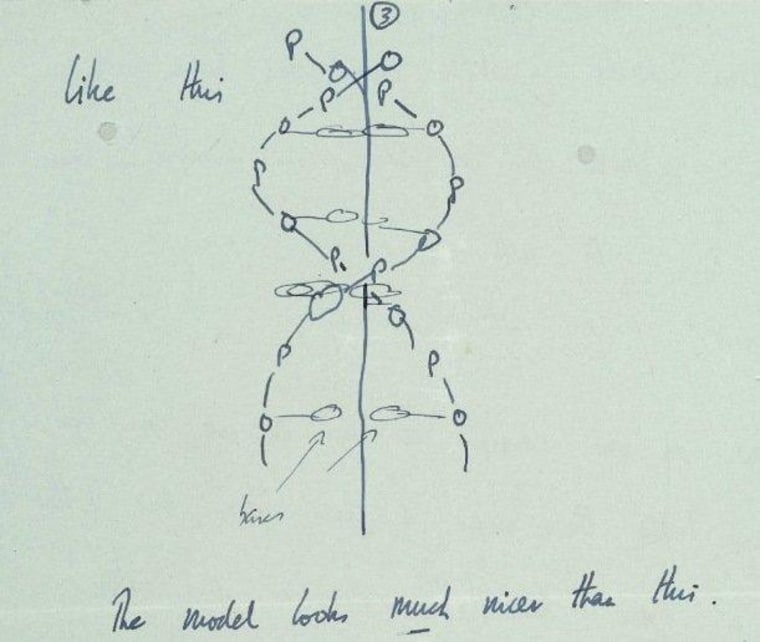The descendants of Francis Crick, co-discoverer of DNA's double helix, are likely to receive a seven-figure sum from this week's sales of the late researcher's Nobel Prize and a handwritten letter describing the structure of the DNA molecule — but the geneticists who are carrying on Crick's legacy will win a dividend as well.
"We'll probably be giving more money to the Francis Crick Institute than the prize was worth when he got it," mused Michael Crick, the Nobel-winner's eldest child and the recipient of that historic letter back in 1953.
The sales have been timed to take advantage of the 60th anniversary of the double-helix discovery, which was detailed by Crick and American biologist James Watson in a paper published by the journal Nature on April 25, 1953. Their findings opened the way to deciphering the molecular codes that control all of life's processes. The paper's publication date is now celebrated every year as "DNA Day."
Double helix, double sale
Crick's legacy is the focus of two million-dollar sales scheduled in New York this week: On Wednesday, Michael Crick's letter goes on the auction block at Christie's. His father sent it to the 12-year-old at his boarding school in March 1953 — just after the researchers worked out the structure of DNA's long, double-helix molecule, but before the Nature paper's publication. "My dear Michael," the letter began, "Jim Watson and I have probably made a most important discovery."
The seven-page letter goes on to lay out the chemical structure of "des-oxy-ribose-nucleic-acid ... called D.N.A. for short." The elder Crick even sketched out the base pairs connecting the molecule's twisted spines.
"As far as we know, it's the first written description of how life comes from life," Michael Crick, now 72, told NBC News.
The letter has been valued at $1 million to $2 million. Michael Crick and his wife, Barbara, will receive half of the proceeds. The other half will go to the Salk Institute for Biological Studies in California, where Francis Crick worked up to the time of his death in 2004 at the age of 88.

Then there's the week's second sale: On Thursday, Heritage Auctions will sell the 1962 Nobel Prize gold medal, as well as Francis Crick's endorsed award check, one of his lab coats and other effects. The medal and its accompanying diploma are expected to go for anywhere between $500,000 and several million dollars. The London-based Francis Crick Institute is due to get 20 percent of the proceeds. Francis Crick's descendants — including Michael as well as two other children and six grandchildren — will split the rest.
It's tricky to convert today's dollars into what the Swedish krona was worth in 1962, but the way Michael Crick figures it, his dad's share of the prize back then would be worth something in the range of $100,000 to $150,000 today.
Sorting out the puzzles
Michael Crick has made his own mark in life as a computer programmer and a game developer in the Seattle area: Among his creations are Pentode, WordZap and the first version of Microsoft Word's spell-checker. Today he keeps his hand in by offering a daily series of "Crickler" word puzzles online.
Crick said he kept his father's letter in a plain envelope for decades. "Around 2005, somebody thought it might be valuable," he recalled. "The first thing I did was make some reasonably good copies of it."
It's a different story for the medal. Michael Crick said that was locked up in a safe-deposit box, and "it was just going to sit there indefinitely." After Francis Crick and his wife Odile passed away, the family started debating what to do with it. Wouldn't it be better to have the medal on display, say, at a museum? If it's so valuable, how should that value be divided among nine heirs?
"That was a bit of a puzzle," the puzzlemaster said.

The family decided to put the medal up for auction, along with the other effects. And Michael Crick decided the letter should be passed on as well. "There was some concern, because the process of valuing the letter was tricky. What do you compare it with?" he said. The experts at Christie's decided to compare it to a 1939 letter that Albert Einstein addressed to Franklin D. Roosevelt, warning about the dangers of nuclear weapons. A copy of that letter was sold in 2002 for $2.1 million.
All the plans for the auctions came together in time for this month's 60th anniversary, which Michael saw as a nice touch. "It just seemed like a good time to put the medal on the market," he said.
He'll be in the audience for this week's sales in New York, hoping that his keepsake — and his father's — will pay dividends for his family and for generations of scientists to come.
More about the history of DNA:
- 'Lost' letters reveal twists in double-helix discovery
- DNA directly photographed for the first time
- All about DNA from NBCNews.com
For more information about Michael Crick's DNA letter, including a remembrance of his father and a catalog that shows every page of the letter, check out Christie's website. Check the Heritage Auctions website to learn more about the medal and associated sale items.
Alan Boyle is NBCNews.com's science editor. Connect with the Cosmic Log community by "liking" the log's Facebook page, following @b0yle on Twitter and adding the Cosmic Log page to your Google+ presence. To keep up with Cosmic Log as well as NBCNews.com's other stories about science and space, sign up for the Tech & Science newsletter, delivered to your email in-box every weekday. You can also check out "The Case for Pluto," my book about the controversial dwarf planet and the search for new worlds.
